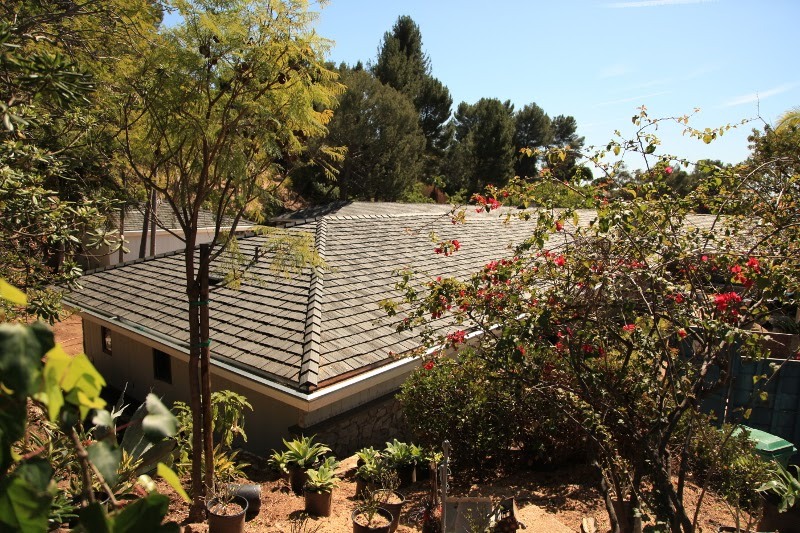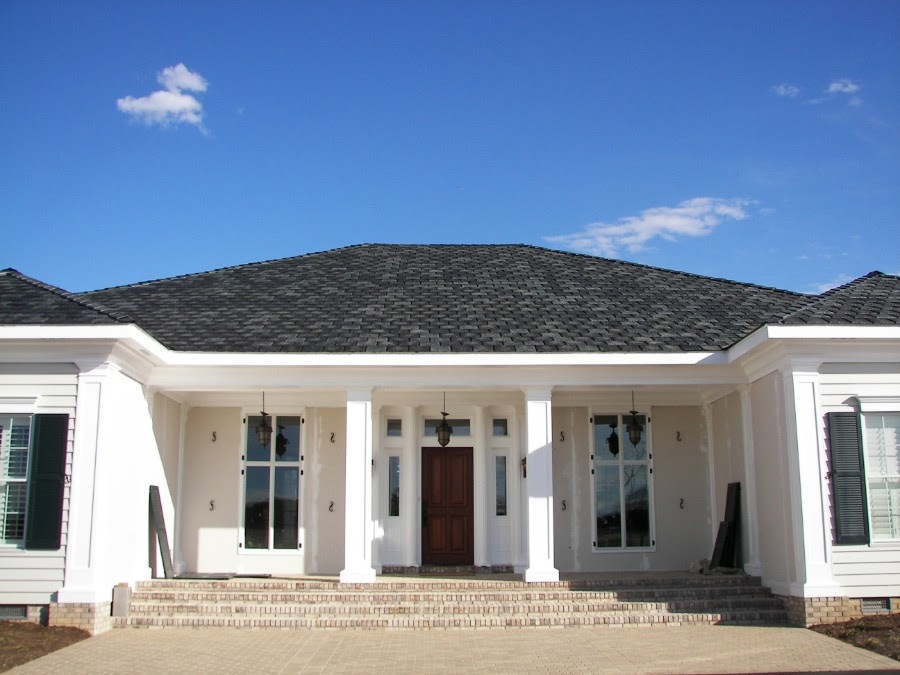In the mid-20th century, low-pitched roofs became the standard for many modern homes, replacing the Victorian-style homes' steep roofs. Low-pitch roofs allow homeowners to utilize the space all the way to the top of the structures. They also reduce heating and cooling costs.

However, low-slope roofs pose one significant problem — water drainage that leads to pooling. High-pitch roofs allow water to easily roll off, however that’s not the case with low-pitch roofs. Water pooling can damage and degrade the roofing material, causing leaks that will harm both the roof and the structure. When evaluating your low-slope roofing options, you must also consider photo-oxidation, mold, freeze-thaw cycles, wind issues, and impact damage, all factors that can decimate the integrity of a low-slope roof.
A low-pitch roof's long-term integrity depends on proper drainage and applying waterproof and durable roofing materials, like Brava synthetic roofing tiles.
Beautiful Brava roofing tiles are the best roofing material for a durable, long-lasting low pitch roof — providing protection against water's damaging effects and resistance to ultraviolet (UV) rays, mold, thermal shifts, severe wind, and impacts from flying debris, foot traffic, and ice.
What is Roof Pitch?
Roof pitch describes the angle, slope, or slant of your roof, indicated by a vertical (height) ratio versus the roof's horizontal (length) measurement. Typically, calculating pitch ratio indicates the rise in the roof over 12-horizontal feet. For example, 6:12 means that for every 12-horizontal feet, the roof changes 6-feet in vertical height.
What is a Low-Pitch Roof?
Low-slope roofs have a slope between ¼:12 pitches to 4:12, requiring roofing techniques and material that ensure waterproofing, rather than water-shedding, as needed by moderate and steep sloped roofs. Generally, all low-slope roofs, up to 4:12, require a double layer of No. 15 underlayments.
Roof Slope Guidelines
Minimum and maximum roof slope guidelines vary based on the roof system and project types.
Code Requirements
Chapter 15 of the International Building Code (IBC) and Chapter 9 of the International Residential Code (IRC) address roof coverings for low-slope applications and high-sloped roofs. The Codes also include requirements for roof decks, underlayment, flashing, structural performance, and materials and testing criteria, along with provisions for re-roofing existing buildings.

4 Concerns with Low-Slope Roofs
1. Water Pooling and Moisture Problems
A low-slope roof without proper drainage will form water pools on the uneven flat spots or divots of the roof. Pooling can destroy the integrity of the roof system, leading to expensive repairs and early replacement.
- Pooling adds weight to the roof, leading to possible roof collapse.
- Pooling degrades the integrity of your roof by encouraging the growth of damaging mold.
- In warm weather, pooling degrades the roof's coating and membrane by intensifying the harmful UV rays, leading to photo-oxidation deterioration.
- An aggregate roof surface can erode from the action of pool freezing and thawing.
- Pooling water can easily make its way into weak points of the roof more than moving water.
- Pooling water can cause the roof's metal parts to rust, damage concrete components, and weaken wood features.
To protect long-term durability and prevent leaks, you must ensure water removal from your roof's surface within 48 hours of accumulation.
2. Freeze-Thaw Cycle
Low-pitch roof shingles must withstand freeze-thaw cycles. Extreme temperature fluctuations can wreak havoc on low-slope roofs, causing thermal splitting. Thermal splitting occurs when warm temperatures expand shingles, decreasing the joints between the shingles. Similarly, cold temperatures shrink shingles, increasing joint space. Thermal splitting puts stress and strain on seams and adhesions, causing thermal splits — a cut running down the entire shingle. Thermal splits lower wind resistance and cause leaks in a roof system. Thermal stress can also lead to cracking, blistering, and tenting of a roof system.
3. Wind Issues
Wind affects low-slope roof shingles through uplift and downward forces, leading to wind inflation, differential stress between the roofing components, and wind scouring (removing the aggregate surface of a roof). Severe winds also increase the damaging effects of rain, hail, ice, and snow.
4. Impact Damage
Impact damage to the low-pitch roof material from foot traffic, ice, snow, flying debris, and hail can puncture, crack, or compromise the roof material, allowing moisture intrusion, damaging the integrity of both the roof system and structure.
The Best Roofing Material for a Low-Pitch Roof
The best low pitch roof tiles must protect against moisture, photo-oxidation, mold, severe temperature shifts, strong winds, and impacts from hail, ice, foot traffic, and flying debris.
Brava Synthetic Roof Tiles — a Superior Product for Low-Pitch Roofs

Brava synthetic roof tiles are the best roofing material for low-slope roofs. Lightweight, colorfast, and eco-friendly Brava synthetic (composite) tiles replicate the appearance of beautiful natural slate, Spanish tile, and cedar shake shingles. Brava roof tiles protect against damage from pooling on low-pitch roofs because the tiles do not absorb water and in fact, resist mold. Brava tiles, installed over an ice and water shield and 30 lbs. of asphalt-saturated and coated organic felt base sheets — further contribute to a waterproof roofing system for a low-pitch roof.
Durable Brava Roofing Tiles
Durable Brava roofing tiles won't degrade, warp, or fade when exposed to intense UV rays. Temperature-resistant Brava tiles resist splitting and cracking during extreme heat and freeze/thaw cycles, and provide wind protection above 188+ MPH with ring shank nails, and a Class 4 impact rating, making them resistant to hail, ice, falling branches, and foot traffic.
In addition to aesthetics and costs, roof pitch plays a significant role in roofing material choice. Brava roofing tiles offer the best solution for low-slope roofs with a 4:12 slope and above. Synthetic tiles from Brava also offer protection against the damaging effects of pooling and resistance to UV rays, mold, extreme temperatures, wind, and impact.
Get Inspired - Click Here to Order Your Complimentary Lookbook.



